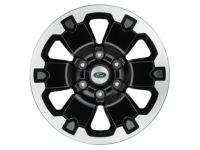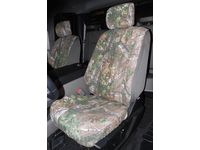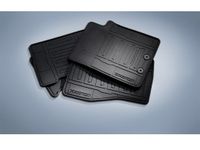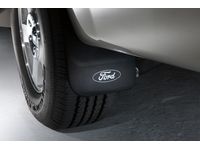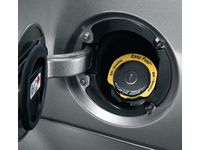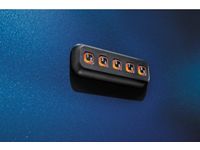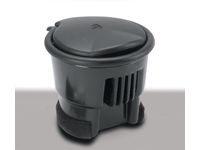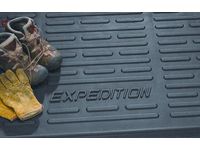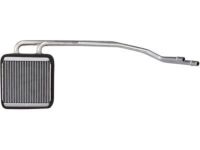- Live Chat
- 1-888-788-9341


Why choose FordPartsGiant
- Devoted Service
At FordPartsGiant.com, we strive to make customer satisfaction our #1 goal by providing dedicated customer service. Our core values of success continue to demonstrate our loyalty by building dedicated relationships with all of our current and future customers. We are always ready to assist you with the slightest detail about your vehicle's parts and accessories.
- Reasonable Prices
We are the best online source for discounted prices on factory auto parts and accessories. Not everyone has the money to buy their vehicle quality parts, here at FordPartsGiant.com we make it economical to buy the best parts without sacrificing the quality or hurting your wallet.
- Swift Delivery
FordPartsGiant.com has centrally located distribution centers all across the United States. This gives you quick access to our discounted Ford Expedition parts when you need them. We offer our customers the convenience of having parts delivered straight to their front door. We are committed to having your vehicle up and running in just a couple of days.
Popular Genuine Ford Expedition Parts
- Engine Parts View More >
- Chassis Parts View More >
- Electrical Parts View More >
- Body And Paint Parts View More >
- Lamps & Wiring Parts View More >
- Wheels & Brakes Parts View More >
- Fuel System & Manifolds Parts View More >
- Speedometer, Bumpers, Mirrors & Wipers Parts View More >
- Automatic Transmission Parts View More >
- Transmission Parts View More >
Shop Genuine Ford Expedition Parts with FordPartsGiant.com
The Ford Expedition, introduced in 1997, marked Ford's debut into the full-size, four-door SUV market. The Lincoln division has marketed a version as the Lincoln Navigator since the Expedition's inception, becoming the first full-size SUV by a luxury brand in North America. The Expedition has proven its longevity, featuring in a 2016 survey as one of the vehicles with the longest lifespan, and maintaining its design characteristics from the early to mid-2000s into its 2017 model. The first generation was developed under the UN93 program from 1993 to 1996, offering ControlTrac AWD with automatic transmission, and a BorgWarner 4406 dual-clutch transmission. Despite initial misconceptions about its off-road and towing capabilities, the Expedition delivered impressive performance with its long-travel four-wheel independent suspension and water-modified boxer chassis. Its T1 chassis, replacing the original, increased torsional rigidity by 10% and featured a new five-link rear suspension, lower control arms, and the option for adaptive air springs. The Expedition also debuted a new 6R75 six-speed automatic transmission with two-speed overdrive, equipped with a mechatronic TCM storing adaptive shift data, ensuring the retention of the driver's style even in power failure situations.
As a full-size SUV designed to tackle harsh road conditions, Ford Expedition may show accelerated wear. First, drivers often report issues with the suspension system, marked by clunking, rattling, or metal-on-metal scratching noises from under the vehicle or the tire area. Additionally, handling might become challenging due to a loose steering wheel. In such cases, inspecting the sway bar bushing and link for faults is recommended. Second, due to the reliance of modern vehicles on electricity, the Expedition may show electrical issues like a wavering or static speedometer needle, squealing noises from behind the dashboard, or erratic readings from the voltage regulator, indicating the need for replacing the speedometer or instrument cluster. Difficulties in starting and powering the car or visible corrosion suggest a bad battery cable that needs replacement. Furthermore, the windshield wiper, crucial for maintaining visibility, may not function optimally if the wiper arm is faulty and should be inspected first if you notice any anomalies.
When it comes to quality and durability, OEM parts reign supreme. They are manufactured to meet Ford's exacting factory specifications and undergo rigorous quality control. At FordPartsGiant.com, we offer an extensive inventory of genuine Ford Expedition parts at the most competitive prices in the market. All our OEM Ford Expedition parts are backed by the manufacturer's warranty and will be shipped promptly to your doorstep. Rest assured, our hassle-free return policy is designed to support you throughout your shopping experience!
Ford Expedition Parts Questions & Answers
- Q: How to remove and install a heater core in a Ford Expedition?A: Take the vehicle to an air conditioning shop to discharge the AC system. Disconnect the negative battery terminal and drain the cooling system. Remove the instrument panel, and disconnect and plug the heater hoses and evaporator lines at the firewall. Remove the plenum demister tube, the bracket on top of the heater core housing, and the heater core cover. Carefully remove the heater core. When reinstalling, ensure the foam sealing material is intact. Reverse the removal steps for the rest of the installation. Install new retainers and O-rings on the heater core hoses, refill the cooling system, and check for coolant leaks. Have the AC system charged. Navigator/Expedition models have an optional rear heal/AC system, with removal and installation similar to the front system.
- Q: How to replace the oil cooler in Ford Expedition?A: To replace the oil cooler in some V8 models, disconnect the oil and coolant hoses. Pull the cooler from the block adapter. If also removing the oil cooler adapter, remove its bolts. Clean the block and adapter, then install the adapter with a new gasket. Clean the adapter and cooler's sealing surfaces and install new O-rings. Apply thread-locking compound to the threaded tube and tighten it. Finish by installing a new oil filter, refilling the cooling system, and checking for leaks.
- Q: How to replace the fuel level sending unit on Ford Expedition?A: To replace the fuel level sensor, start by raising the vehicle and supporting it securely on jackstands. Disconnect the electrical connector for the fuel level sensor. Position the ohmmeter probes into the electrical connector and check the resistance using the 200-ohm scale on the ohmmeter. With the fuel tank completely full, the resistance should be about 160.0 ohms, and with the fuel tank nearly empty, the resistance should be about 15.0 ohms. If the readings are incorrect, replace the sensor. For a more accurate check, remove the sensor from the fuel tank and check its resistance while manually operating the float arm. To replace the sensor, remove the fuel tank and the fuel pump assembly mounting screws or threaded retainer. Carefully angle the fuel pump/fuel level sensor out of the opening without damaging the fuel level float. Remove the mounting bolt and harness connectors. Installation is the reverse of removal, and be sure to install a new rubber gasket.










































